Combat aircraft. Dewoitine D.520
D.520 is deservedly considered the best French fighter of the Second World War. And not because he was the newest of all that came up with the French designers, but because the car was just wonderful.
And it's not just some outstanding LTH machines, but the fact that the French pilots fought and fought really well on it. And not only French.
Our story the more interesting, because the company Emile Devuatina developed a plane, let's say, as a private initiative. We understand this approach, in the USSR this principle was implemented and was quite normal, but in Europe it did not spread. For first, all the same money, and then everything else.
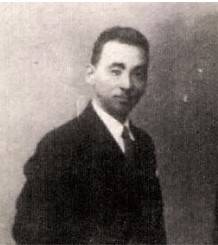
And his plane:
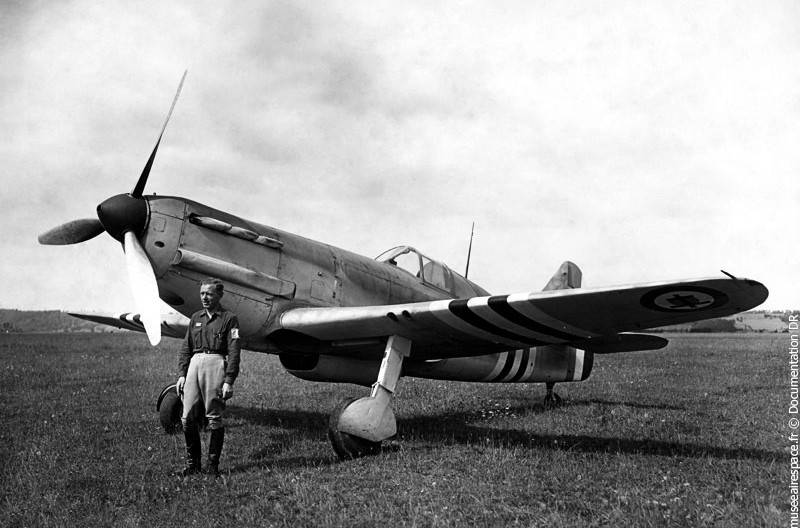
Strange, but at the very start this rather elegant plane lost in the competition to the MS.405 aircraft of the Moran-Saulier company, which mutated in the Moran-Saulier.406 and took its place in the plans of the French Ministry of Defense.
But the Dev.WAT family of the D.500 family actually formed the basis of the fighter aviation France, therefore, the chances remained, despite losing the competition. Although money for the construction and further work was not given to Devatin. In the 30s, such greed was normal for France, for which later it was necessary to pay for the full program.
D.520 for the first time went up in the sky of 2 in October of 1938. Since the old 12Y21 engine was put on the plane to save, the aircraft showed nothing. The maximum speed that was able to squeeze out of D.520 was less than 470 km / h. In general, everything was so bad, but on the other hand, it is just as promising.
It was necessary to replace the engine, put a normal screw, redo the cooling system.
It helped. Changing the car and putting the motor 12Y29, Devuatin received at the exit 505 km / h. What was already similar to what was ordered by the French Defense Ministry.
In 1939, at the very beginning, a second copy, D.520-02, was released for testing. He was different from the first instance. He had a completely different tail, plus a flashlight radically altered. The middle section now did not fold back, but shifted back, and it could, if necessary (to save life) open in flight.
D.520-02 received weapons, consisting of 20-mm motor-gun "Hispano-Suiza" and two 7,5-mm machine guns in gondolas under the wing.
This plane went to the main tests. On tests, the speed was even higher than that of the first instance, 511 km / h.
And with the third instance, everything became beautiful. With the 12Y31 engine, which was put on the plane in the summer of 1939, the aircraft developed the 535 km / h. The bonus was improved rate of climb. Encouraged by this growth in LTH, the Devuatina gunsmiths removed the winged containers with machine guns and placed four machine guns in caliber of 7,5-mm and their ammunition in their wings.
For 1939 of the year - very impressive.
It is not surprising that the French Defense Ministry decided to order 200 aircraft. It happened in April 1939. In June, Devuatin received a second order, another for 600 aircraft.
The serial fighters differed slightly from the first ones by a slightly elongated fuselage, additional gas tanks in the wings and the new 12Y45 engine, the 930 horsepower, which should have improved the aircraft's LTH.
And so the engine somewhat let everyone down. Just like in the USSR. The motor was not ready, the deadlines were broken, and the plane went to the series, but very slowly.
And then the war began ...
By December 31, the French Air Force received all 19 vehicles. In the conditions of an already ongoing war, even if it was nicknamed "strange", this was clearly not enough.
But even those that came out of the shops, to call full fighters language does not turn. In general, the new engine - new problems. The engines were heated and even overheated at maximum speed, the superchargers jerked, the guns were overheated from engine overheating, there were problems with the exhaust. In general, such a set for a new car is quite typical for itself, but to top it all, the speed dropped.
In general, with the maximum speed was a disaster, it fell to 500-510 km / h, which eventually upset the military to such an extent that the planes went to the factory.
Again, no car becomes immediately on the wing. Children's diseases are cured by the hands of specialists and time, but with the latter it was not very good. Considering the Bf-109Е appeared in sufficient quantities by the Germans - everything became altogether sad. And the "messer" had to oppose a plane that was really not inferior to him. D.520 was so basically. It remains to be in fact.
The first combat-ready D.520 began to arrive from the factory only in early April, but not in a stream, but in quite normal batches. Moreover, Devuatin managed to assemble and refine about a hundred aircraft at the time of transfer. And the changes made - about a miracle! - returned to the plane the speed of the prototypes, that is, 535 km / h.
The plant, according to the requirements of the military, entered the operating mode of assembling 100 aircraft per month. By May 1940, the first 76 machines were already in the army, but alas, the 10 of May began the most devastating German offensive.
D.520 actually from the factory were thrown into battle. To be fair, in all the French Air Force only one group of GC 1 / 3 (34 aircraft) thoroughly mastered the new aircraft to the level of an efficient unit. The rest, alas, mastered the technique in the course of the battles, which did not lead to achievements.
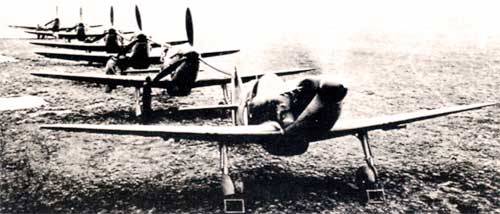
GC 1 / 3 entered into battle on May 13 near the Belgian border. The results of the first battles looked very encouraging. The group reliably shot down 10 German planes (Hs-126 - 3, Non-111 - 1, Do-217 - 2, Bf-109D - 3, Bf-109E - 1). Their losses amounted to 2 aircraft, shot down in battle with the "Messerschmitt" over Sedan.
The first battles showed that D.520 was inferior to Bf-109 in speed and vertical maneuver, but exceeded in maneuverability. The Germans had a more powerful engine. But in terms of weapons was actually parity, since the 2 109E wing cannon did not have the accuracy of a French one, but firing a propeller through a sleeve.
The rest of the German fighters, including the "Messerschmitts" of the earlier series did not go to any comparison with the D.520.
In total, in battles over May-June 1940, D.520 had 108 confirmed victories on his account. If you look at it and compare it with casualties in air battles (14 planes), everything is quite impressive, but the problem was that the French Air Force suffered the main losses during the retreat, losing the planes on the ground.
In general, the French lost about Devuatins 100.
On 25 June, that is, at the time of the actual end of the fighting, Devuatin factories manufactured 438 D.520. The plant produced ten fighters per day, but it is natural that after the surrender, the fighter production was stopped.
But the war for D.520 did not end there.
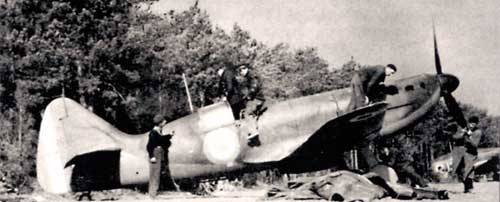
The 153 aircraft remained in France, and the French pilots simply hijacked the bulk of the combat-ready vehicles. 175 aircraft flew to North Africa, three flew to England. All the Germans remaining in France were mothballed just in case.
In North Africa, the 4 groups in service were the Devuatins found themselves in the Vichy Aviation of the puppet government of Petain. And in fact, immediately began to fight against the former allies of the British.
Two air groups were sent to Lebanon and Syria, where they fought against the British Air Force, supporting German operations in Iraq. A funny moment: British troops invaded Syria as a result, which included parts of De Gaulle's "Free France". The Germans preferred away from sin to remove the "allies" of the French from Syria.
The results of the battles with the British Hurricanes and Spitfires were as follows: the French shot down 30 British aircraft. In response, the British shot down 11 aircraft and destroyed 7 on the ground. The concomitant losses of the French (accidents and major damage) sentenced another 12 aircraft.
In general, D.520 proved to be a very worthy opponent for both the Germans and the British.
Considering the usefulness of combat aviation units for themselves, the German command allowed the Vichy government to allow its air force, increasing the number of combat aircraft. As a fighter was approved D.520.
Production of aircraft in 1941 was resumed instantly, from units and parts of the pre-war groundwork. The entire equipment was fully preserved at the factories, which made it possible to receive combat vehicles almost immediately.
In general, in Vichy, with the help of the Germans, they provided themselves with quite good aircraft. In France itself, there were 234 D.520, 173 machines were based in Algeria, Tunisia and Morocco, 30 - in Senegal.
8 November 1942, Anglo-American forces launched a landing in the North African colonies of France as part of Operation Torch. Reasonable air strikes were inflicted on the French airfields. Rightly the French responded with a blow to the blow.
In these battles D.520 showed that he was not at all inferior to the Allied fighters. For example, in the air battles near Oran, reflecting the attacks of the Allied aircraft, the French lost the Devuatins 35. And the Allies lost their 44 aircraft (25 fighters and 19 bombers).
The Germans eventually got tired of flirting with the French, and the Vichy Air Force was beheaded and dispersed. The reason was the deserter flight of the group GCI / 2 in Algeria, to "their". The Germans requisitioned the remaining Devuatin 248, and the enterprises in Toulouse that produced the aircraft were stopped and closed.
Germans distributed aircraft to the Allies, the benefit is that the plane was worth it. More than a hundred cars flew to Bulgaria, where they took part in repelling American raids on the oil fields of Romania, tried to resist the bombings of Sofia, and managed to make war against the Germans. In general, the Devuatins served in the Bulgarian Air Force for quite a long time, until 1947.
More than fifty D.520 received Romanians. So the French fighter was on the Eastern Front, where, however, he did not find any special laurels. Romanian pilots preferred Messerschmitts, and by that time the enemy had planes stronger than D.520.
Italians gave 60 D.520. They were equipped with four training aviation units, as a combat fighter in the Italian Air Force D.520 was not used.
The Germans themselves also tried to use the “Devuatins”. In the spring of 1943, scheduled test flights began, there was even a whole squadron that mastered these machines, JG101, commanded by the famous ace Walter Novotny.
But the Germans "Devuatin" as is "did not go." In general, it is natural, since the Germans had enough of their good planes in 1943, both quantitatively and qualitatively. Plus, French aircraft were technically very different from German ones. For example, the cause of heaps of accidents in the performance of German pilots was the fact that on the French aircraft the gas sector traditionally worked in the other direction from the German one.
However, in small quantities D.520 was used in air defense. And in the 1944 year, when everything began to get unpleasant for the Luftwaffe, D.520 was again collected in Toulouse, and they released about 150 units.
In June, 1944, the plant finally stopped assembling D.520 due to the virtually complete destruction of Allied aircraft.
And in the same 1944, D.520 began to fight against the Germans. With the offensive in France, the Allies captured about 50 aircraft in varying degrees of combat readiness. It turned out to be a simple matter to find the pilots, to re-form the GCB 1 / 18 air group, and the Devuatins began, as in Bulgaria, to fight against the former allies.
After the war, D.520 very long served as a training aircraft, the aircraft turned out strong and tenacious. Training D.520DC with dual control became the forge of personnel for the post-war French Air Force and served as such until the 1963 year.
Currently, four D.520 (all in France) are preserved, one of them still flies - at air festivals and air shows.
The plane was really good and in no way inferior to colleagues from around the world. The only disadvantage of his career was that France quickly won back, because D.520 went the way of a mercenary, fighting for some, then for others.
But the fact that D.520 really fought the entire war, from the first to the last stage, definitely puts it on par with the most outstanding planes of the time.
LTH D.520:
Wingspan, m: 10,20
Length, m: 8,60
Height, m: 2,57
Wing area, sq.m: 15,97
Weight, kg
- empty aircraft: 2 036
- normal takeoff: 2 677
Engine: 1 x Hispano-Suiza 12Y 45 x 935 hp
Maximum speed km / h: 535
Cruising speed, km / h: 435
Practical range, km: 1530
Maximum rate of climb, m / min: 690
Practical ceiling, m: 10 500
Armament:
- 20 mm gun HS 404
- four wing 7,5-mm machine gun MAC 34 M39
Total was built 905 "Devuatin" D.520.
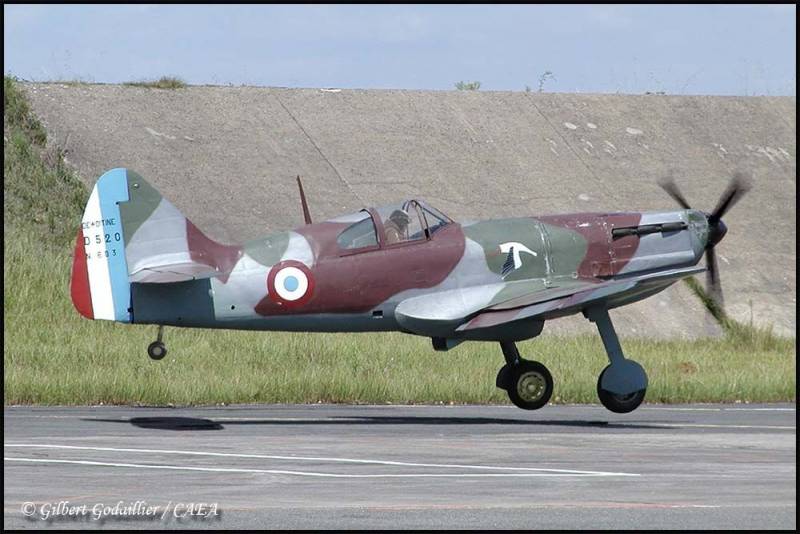
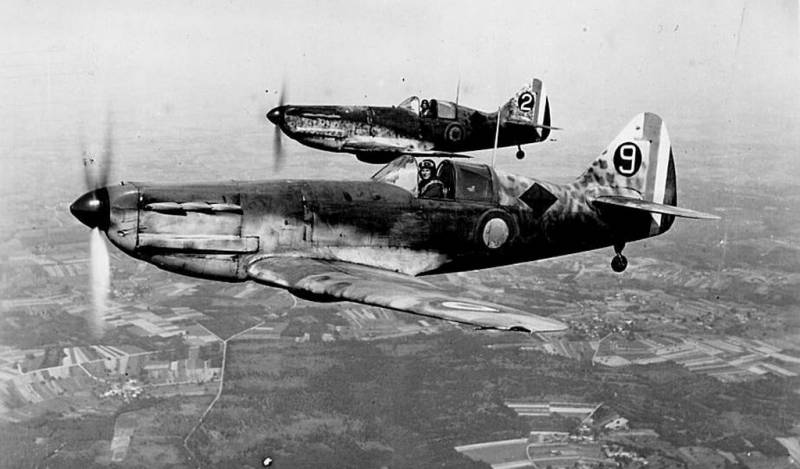
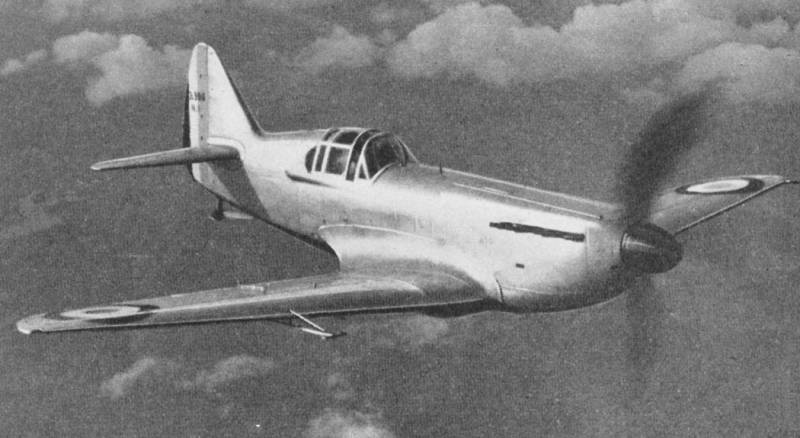
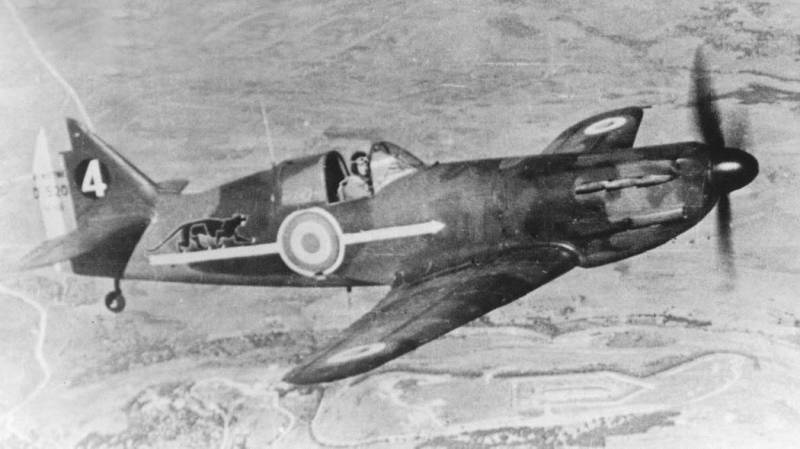
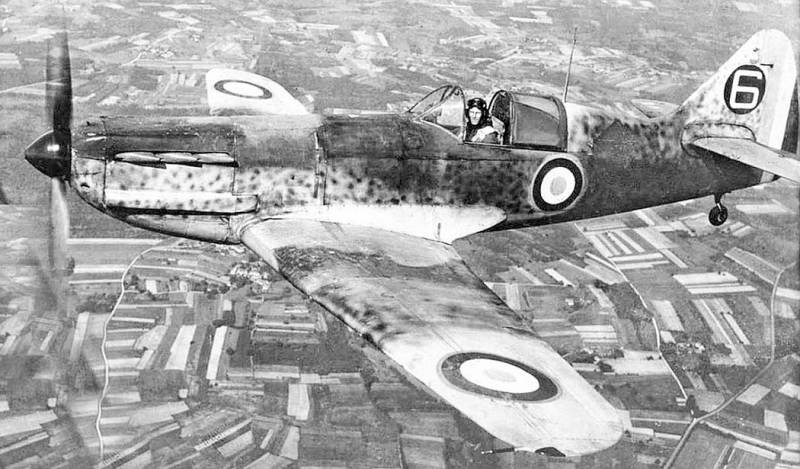
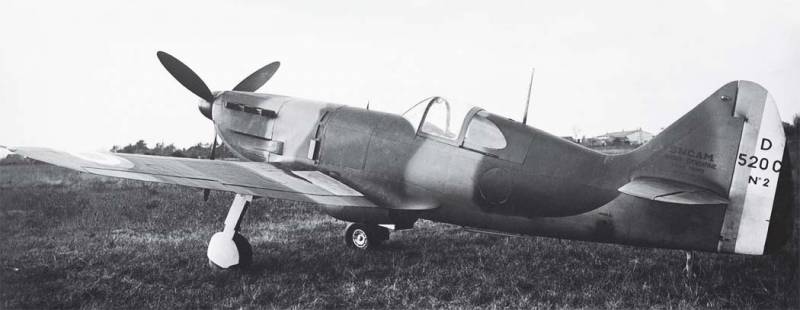
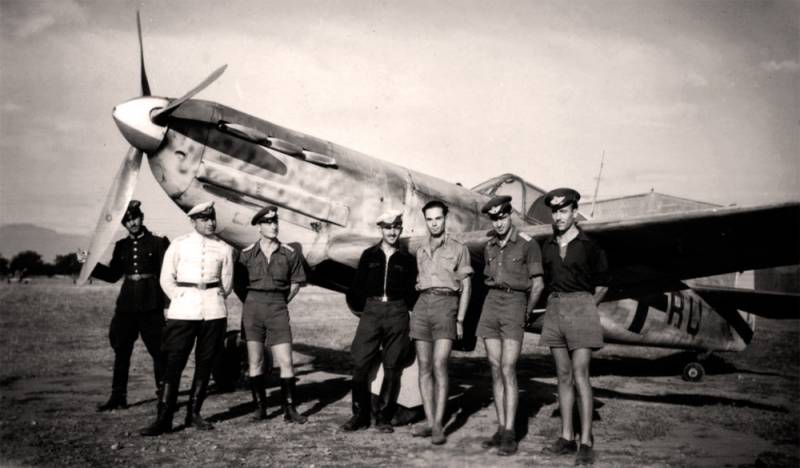
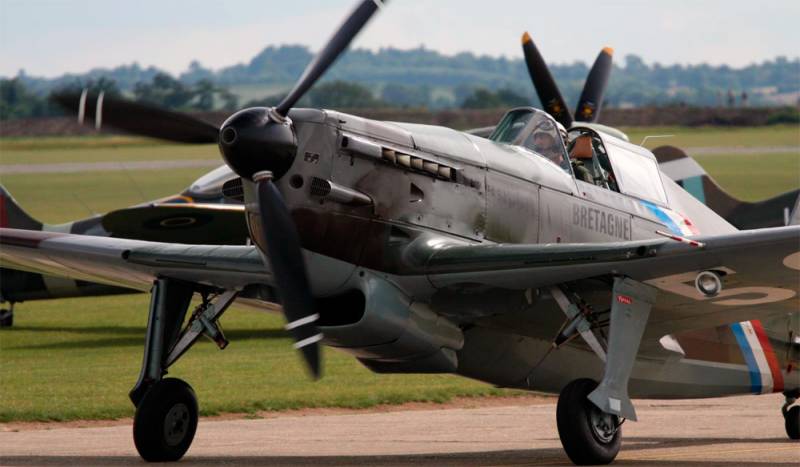
Information